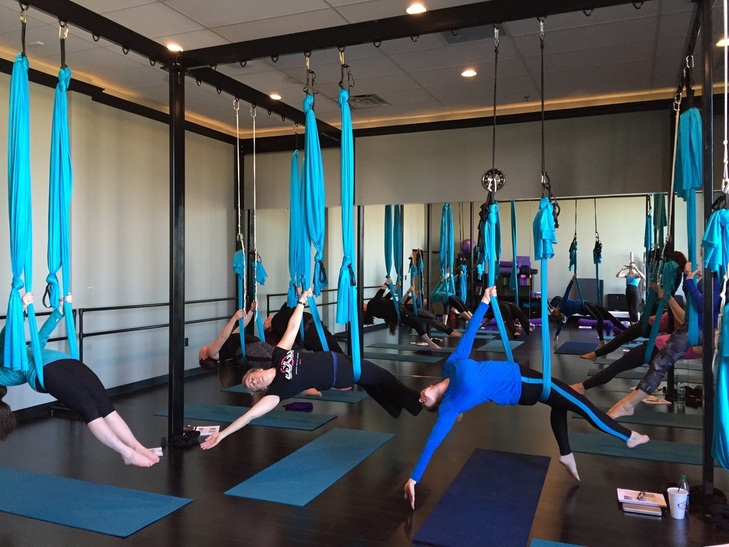1. Observe an experienced teacher.
I always learn so much about the teaching process by observing someone else teach a class. This process is far different from taking a class, because it forces you to be in “teacher brain” rather than in “student brain,” better known as, “I’m going to zone out and completely devote this time to me and my body” brain. By observing a teacher from the outside, you can notice a lot and take notes. First, how does the teacher greet students? What is the energy of the room? Next, is there logic behind the warm-up? What teaching methods are being used (demonstrations versus verbal cueing, for example)? Then, how does the teacher approach struggling students? Does the teacher spot or offer assists, and are they appropriate for the context? You can discover a great deal about effective (and ineffective) teaching by sitting out of a class and using your powers of observation. 2. Assist an experienced teacher. Rather than jumping into teaching head first, I like having new aerial instructors assist me so they can practice spotting. The beauty of assisting is it allows the new teacher to take in what is happening in the entire room, and then zoom in on just one person and work with him/her one-on-one. The students don’t mind it either – in fact, they often appreciate the extra attention! Assisting also sets you up as a liaison between the teacher and the students. When I assist, I get to experience the class from both the teacher and student perspectives. When this happens, I can decide how I might teach the class or even notice things the lead teacher does that I would never have considered before. I can notice both what the students want from the teacher, as well as what the teacher is trying to offer the students. Holding both perspectives at once is a powerful tool toward becoming a great teacher and communicator. 3. Teach a class while an experienced teacher observes you. While it may feel intimidating to be observed by another instructor, this person can give you so much feedback to help you improve your teaching. If the class you are teaching is for beginners, you could opt to have an assistant to take some of the burdens of spotting everyone off your plate. In my mind, it is better to hear the constructive criticism from someone you trust than to hear nothing and wonder why so few students attend your classes. Take the feedback like a pro, apply it, and watch your classes flourish. 4. Teach a class on your own. Finally, we arrive at our goal – teaching solo. Once you are prepared for this step, it still might be nice to have an assistant especially if you have a larger class of beginners. In some cases, you might want to co-teach. Co-teaching is where two teachers of equal standing work together to teach a class. This setup can allow teachers to break a class into smaller groups according to level or interest, or it can be useful when teaching duo or partner style classes. Ultimately, teaching is a process just like learning. By taking it step by step, you will gradually become more comfortable and confident in your teaching abilities, and also have the skills to ask for assistance when needed. Happy Flying, Julianna Julianna Hane traded life on a cotton farm to become a dancer and aerialist. She is a master teacher trainer with Born to Fly™ Productions, a writer, and a dance professor at College of Charleston. Comments are closed.
|
AuthorsOur authors include our Master Teacher Trainers as well as Born to Fly™ Certified Teachers. Archives
February 2019
Categories
All
|
|


 RSS Feed
RSS Feed